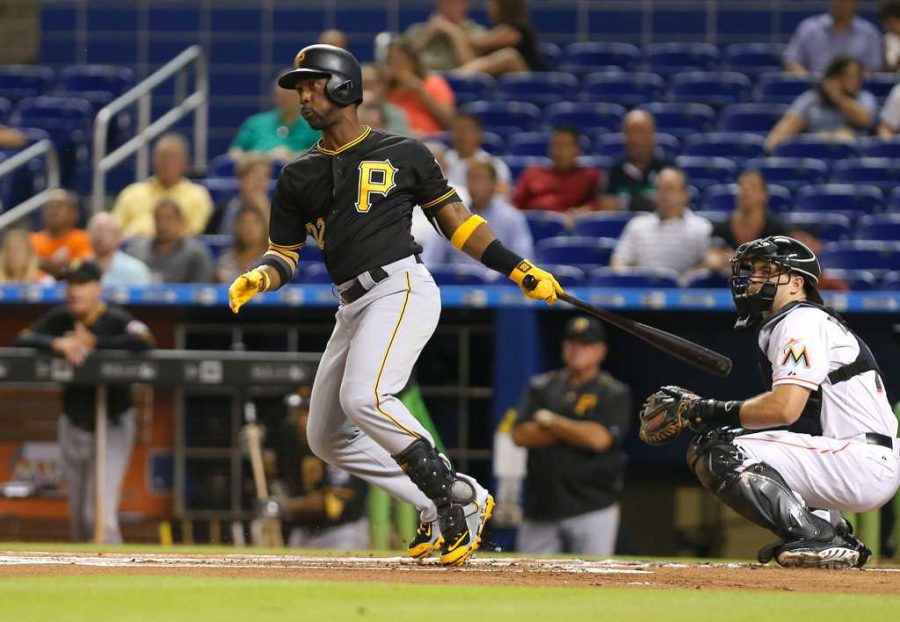Small-market teams like the Pirates acquire prospects or undervalued players through strong drafts and savvy trades. But sustaining their place at the top isn’t always a home run.
A core of young, cheap and talented players fuel the Pittsburgh Pirates and have turned the Bucs into a serious contender over the past three years. But based on the team’s recent acquisitions — or lack thereof — it would seem the Pirates management overestimates their standing as a contender, as they need to make bigger offseason splashes if they want that success to continue.
A large market team like the Boston Red Sox or Los Angeles Dodgers is never too far away from the playoffs, as it can quickly patch up a roster with big-name free agents.
The Pirates, though, have less wiggle room. They’ve gotten there with young stars like outfielders Andrew McCutchen and Starling Marte and pitcher Gerrit Cole. Guys like Gregory Polanco, a young, somewhat unproven but potential-laden outfielder, and Jung-ho Kang, a strong hitting utility infielder the Pirates signed out of South Korea last offseason, help too.
Most strong rosters, and especially small-market rosters, consist of a similar foundation of cheap, controllable players. Problem is, these players get older and their contracts end, making them too expensive to keep away from a big-money team. It’s an inevitable result, as players like Russell Martin, Edinson Volquez and A.J. Burnett — who would eventually return only after a disastrous year in Philadelphia— departed Pittsburgh for pay raises.
The Pirates don’t have to worry about Marte’s contract ending until 2021, but McCutchen will be a free agent in 2018, Kang in 2019 and Cole and Polanco in 2020. Guys like McCutchen, Marte, Kang and Cole are very much in their prime years right now, while the first three are closer to 30 than 20.
McCutchen’s the key player to note, as the perennial MVP candidate can probably keep performing at a similar level for at least two of his last three years with the team. This will ensure the Pirates have a three-year window as a sure-fire contender, but once his contract is over, he’ll likely become too expensive to re-sign.
After that, the Pittsburgh’s future is murky.
With this future loss in mind, one would expect a sense of urgency from the Pirates, who have, instead, gone dumpster diving, trying to find cheap options and squeeze every last ounce of production out of them. While this has worked over the past few seasons, it is far from foolproof.
Two years ago, the Pirates made Volquez, Clint Barmes and Travis Ishikawa their top free-agent signings. Volquez was fresh off an awful season as one of the worst starting pitchers in baseball. Barmes and Ishikawa were marginal bench players at best.
To give the Pirates credit, they got a bargain in Volquez, who they turned into a solid mid-rotation starter. Barmes continued to be an average backup, while Pittsburgh designated Ishikawa for assignment 15 games into the season.
In 2014, the Bucs were more successful, re-signing starting pitcher Francisco Liriano, who continued to remain a borderline top of the rotation starter, signing Kang and Burnett and trading for Francisco Cervelli.
The Pirates signed Kang to a reasonable contract, as they took advantage of a previously untapped baseball market, while Burnett produced as a mid- to top-tier starter. The Pirates acquired Cervelli for Justin Wilson, a relief pitcher, and turned into a near-All-Star starting catcher.
It was a masterful set of astute, cost-effective moves that supplemented a strong core and turned the Pirates into one of the very best teams in baseball. But bargain shopping can only get you so far, and for so long. Regardless of the past few offseasons, Cervellis and Volquezes don’t pop up frequently.
With a few strong acquisitions, the Pirates had a chance to turn themselves into the arguable front-runner in the National League. But again, outside of reliever Joakim Soria, the Pirates went scraping at the bottom of the barrel.
In those seedy depths, they found Aramis Ramirez, Michael Morse, Joe Blanton and J.A. Happ. Happ, after struggling with the Toronto Blue Jays, turned into the lone difference maker as a strong mid-rotation starter, while the other three provided little more than extra arms and bats.
Unsurprisingly, the Pirates got stuck in a wild-card matchup and lost.
Now, this offseason, the Pirates sit in a situation much like the 2015 trade deadline. The same core players are there. The Pirates just need to bolster the supporting cast.
These acquisitions aren’t beyond the Pirates’s price range or trading abilities, particularly with the lack of big contracts in their books. They don’t need to acquire A-list, elite players — most of those guys are already off the free agent market anyway. Second-tier players are perfectly fine, as the Pirates already have top-tier contributors.
The Pirates should aim for players like starting pitcher Scott Kazmir or utility man Daniel Murphy — impact signings that will come at a cost but won’t break the bank. And if they can’t sign them, the team’s consensus top-10 farm system provides plenty of prospects to acquire these players in trades. But standing pat isn’t a viable option.
The resources are there to turn this team into a World Series champion. It’s time for the Pirate’s management to start looking in greener pastures for players, not the dumpsters.


